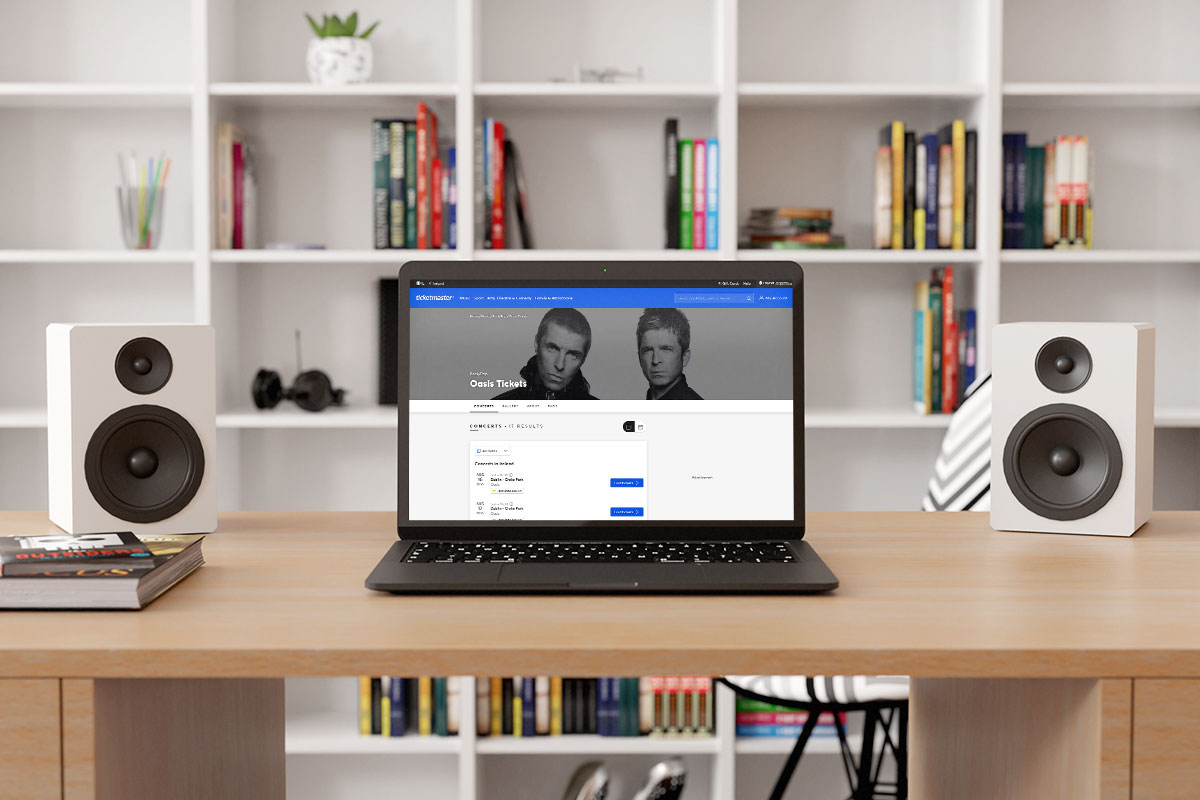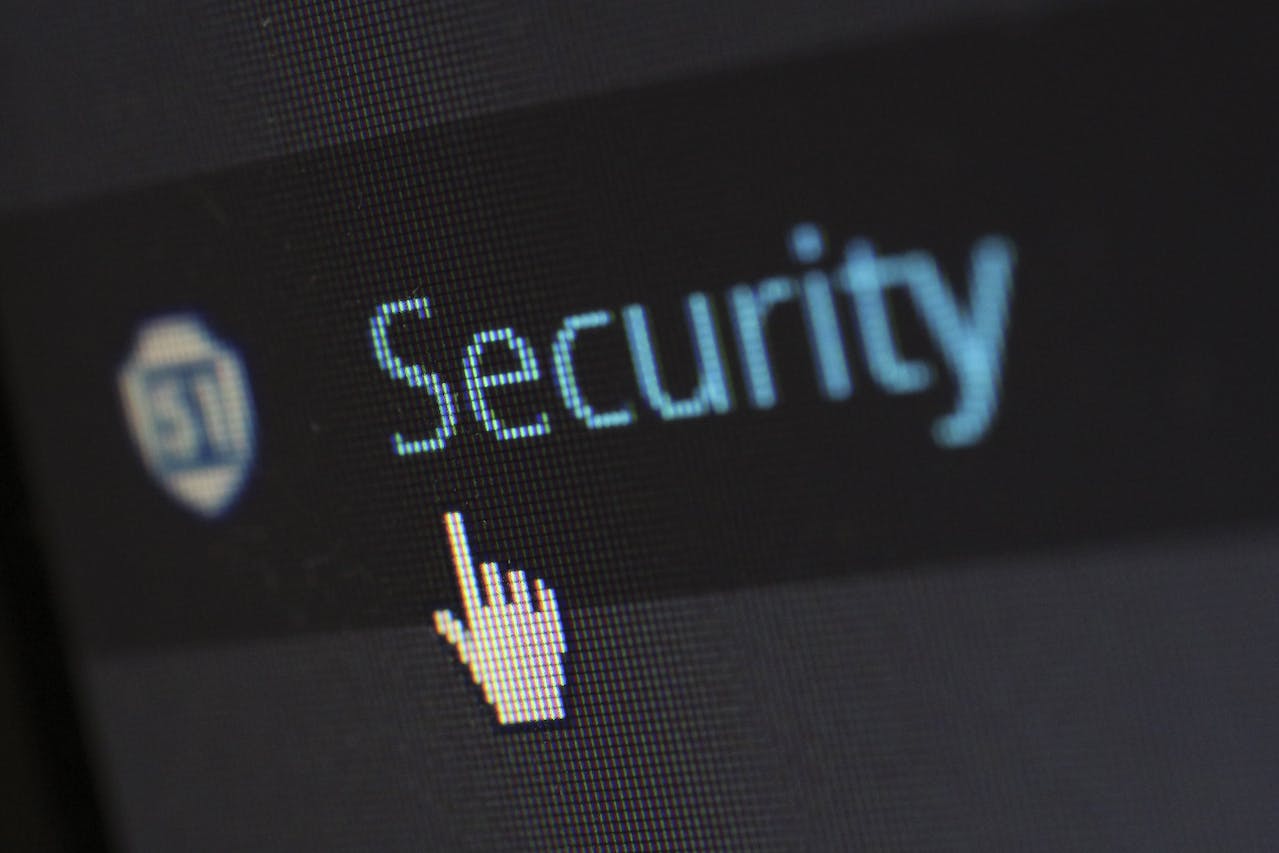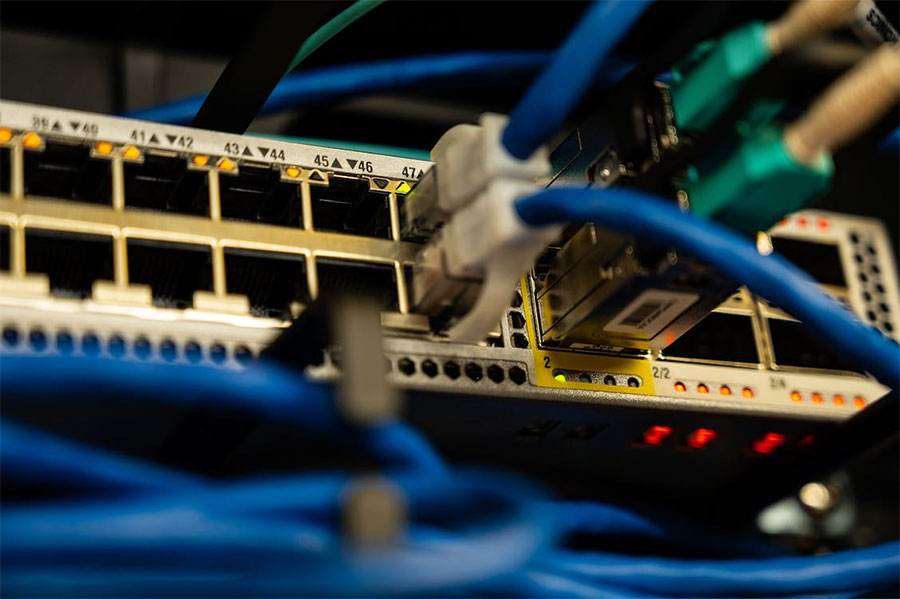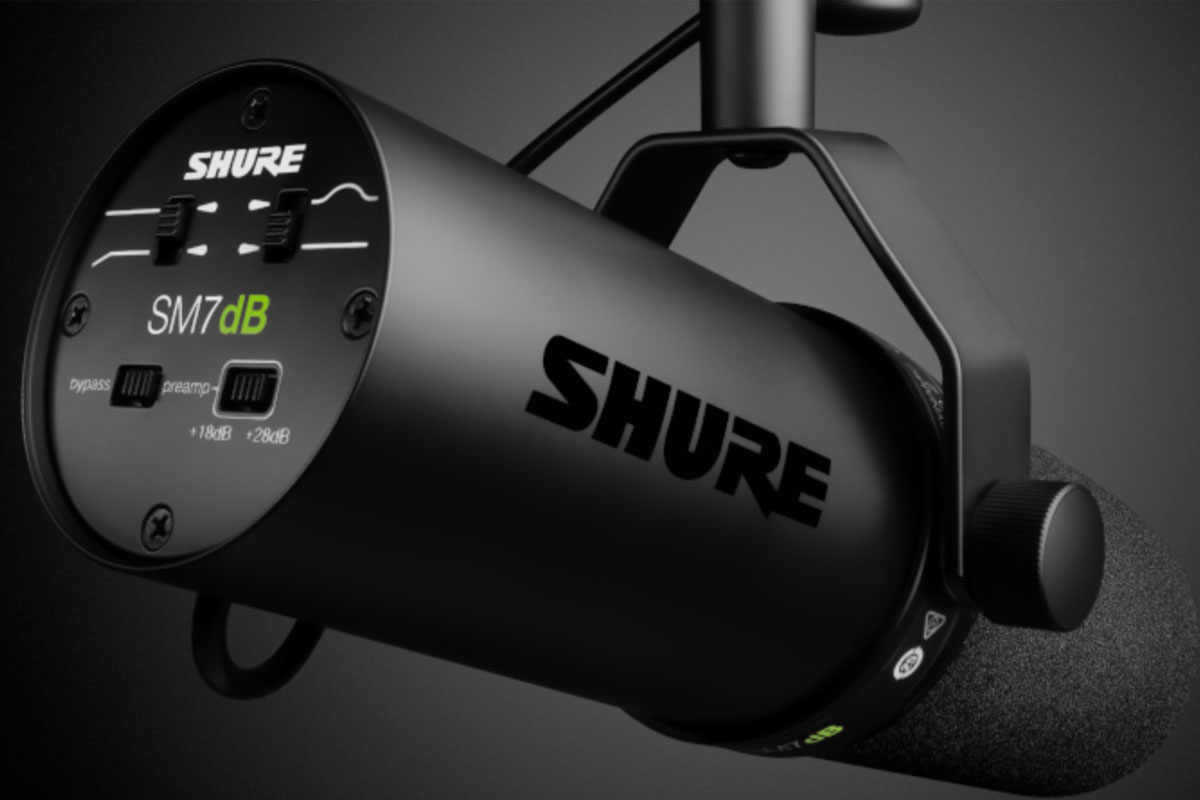Oasis are returning to Irish and UK stages in 2025. The cat’s out of the bag and 15 years on from their acrimonious ‘split’, the boys are back together. With another Ken On Tech radio piece, this week I’m taking a look at how you can set yourself up to buy tickets on Ticketmaster, whether it’s for Oasis or any other gig upcoming.
I’ll guarantee you this – there weren’t 500,000 Irish fans queuing for tickets to see Liam Gallagher on his own this year. Similarly, for Noel Gallagher’s latest High Flying Birds gigs, there weren’t 500,000 fans looking for tickets. However, put them together and call them Oasis, and you could be looking at half the country trying to get tickets for this new tour from one of the top live bands of all time.
If shops around Ireland were still selling physical tickets, the queues would have started at 8am today following the announcement that the band responsible for some of the biggest-selling albums and concerts of the past 30 years will be heading to Croke Park in August 2025. There would be tents out, folding chairs, and radio reports from the hopefuls at the top of the queue explaining how they had skipped work, missed job interviews, taken holidays, or feigned an injury, just to get their hands on Oasis tickets.
But physical Ticketmaster outlets are a rarity these days, the move to strictly-digital sales all but complete, meaning it’s anyone’s game when it comes to getting your hands on tickets.
A presale ballot is being run by the band via Openstage, with those picked for the presale getting a chance to buy tickets on Friday, likely 12-24 hours before the general sale begins. You can register in advance, answer some band questions, and hope for the best. (Update: Millions have registered for this, causing all manner of consternation ahead of the weekend).
What’s definitely, maybe more concerning for Irish Oasis fans is that sales for dates in Dublin on August 16 and August 17 will go on sale at 8am this Saturday morning, an hour before UK sales begin. If I was a fan living in the UK, worried about the millions trying to get their hands on tickets to Cardiff, Edinburgh, Manchester or London, I’d be doing whatever I could to get into the Irish queue.
So how best do you prepare for the Oasis ticket sales on Saturday morning?
Tips for buying Oasis tickets on Ticketmaster for the #Oasis25 tour
Sometimes, buying tickets via Ticketmaster is a breeze. This weekend could yet be carnage, so to give yourself the best possible opportunity, here are some simple tech tips you can follow. After that, it’s in the lap of the Ticketmaster gods.
1. Get your device ready
For starters, here’s a few things you can get out of the way
- Windows updates: If you’re planning on using a desktop PC or laptop to make your purchase, make sure there are no unexpected updates due. The ticket sales start at 8am, meaning people are going to be logging into Ticketmaster.ie from early morning. Early hours are typically ‘non-working’ hours for Windows devices, seen as an ideal time to run Windows updates. The last thing you want is to get caught in a surprise update that prevents you from getting into the virtual queue. So, make sure your devices are up-to-date, or at least you’ve ignored any updates on the day.
- Internet connection: Check your data connections before you log on – is the home broadband or Wi-Fi working? Is your mobile data allowing your phone get online? If in doubt, restart connections, then get yourself set up.
- VPN connection: This one comes from Ticketmaster – when it comes to a VPN, it’s not advised for buying tickets. Any suspicion on your connection, whether obscuring your location, blocking connections etc. could be treated as a ‘bot’ and you may find your place in the queue suspended before you’ve even got a chance to pick tickets.
- Clear your cookies: Starting from a clean slate with your web browser is good practice, especially where you’ve got pages and login sessions cached. Clear the cookies, sign in from fresh.
2. Online purchasing – get your payment method ready
If this is your first time buying anything online, make sure that you’ve got your debit or credit card set up for online shopping in advance. New cards in particular may need registration in advance through your mobile banking app (AIB, Bank of Ireland, Revolut). You should also keep your phone handy in case you need to authorise a ticket payment through your banking app. Most 2FA/MFA transactions appear first via notifications on your mobile device. Have you got these turned on? If not, you might also find the notifications within your mobile banking app once signed in.
3. Get your Ticketmaster account ready
When it comes to your Ticketmaster account, there are a few things to note. In my case, I’ve not signed in in a few weeks so I’ve been prompted to pick a new password. The last thing you need on Saturday morning is to be asked to set up a new password, then you can’t get a connection to the account screen, or the password emails don’t arrive in time. While it might not be an issue for smaller gigs and events, given the anticipated demand for Oasis tickets this weekend, I would be very surprised if the walls don’t come crashing down with different sections of the website unavailable or a queue-for-the-queue being implemented.
So, with your Ticketmaster account, before Saturday morning (or Friday if you get into the presale)
- Make sure you’re able to sign in and your login details are up to date
- Have your current mobile phone number registered as you may be sent a code in order to connect to the waiting room on Saturday morning
- Have a payment method (Credit or debit card) saved in advance so you’re able to complete your purchase, if you’re lucky enough, in time.
4. Get yourself ready
Tickets go on sale at 8am. People will be queuing from early. You can’t expect to connect at 8am on the dot and be among those at the front of the queue (that’s another debate entirely as to the mechanism for placing people in the queue).
So, give yourself time, and with the demand for tickets, I would suggest being logged into your Ticketmaster account, and getting into the waiting room for tickets at least 30 minutes before the sale begins. That might mean setting the alarm even earlier if you still need to check your device for updates, passwords, credit card details and the likes.
5. Join the queue
It’s going to be busy. And when it gets busy, Ticketmaster like to start a queue for the queues, to throttle traffic on the website and control the flow of users from page to page.
Know the date you want tickets for, get to the ticket page and when prompted, join the waiting room. At this stage, you’ll be told you don’t need to do anything else with a countdown timer taking up the middle of your screen. Once the timer reaches <1 minute, there will be a pause before the screen automatically refreshes and drops you into the queue. You’ll know your exact queue position at all times, but – and I hate to break it to you – unless your position in the queue is less than 15,000 I would say the odds of getting affordable tickets are minute.
6. Avoid multiple tabs or devices for the same date
Here’s the deal – you can join multiple queues. That is to say, you can get in the waiting room and queue for tickets for the same act, for separate dates. When you’re logged in on your chosen device and assigned a place in the queue, you’re issued a queue ID. It’s one ID per user per event. For example, if you open your laptop and try to get tickets for Saturday, then have your mobile phone open and you’re looking for tickets for Saturday, you run the risk of either losing your place in the queue entirely (suspended), kicked to the back of the queue, or missing out on tickets if you get that far.
Those signing in through the same account, for the same date, on multiple devices will be prompted that they’re already in a queue position another device and given the choice to remain queuing on their current or an alternative device.
The same goes for trying to get tickets for the same date in different tabs on your browser. You can, however, join queues for separate dates on the same or separate devices. So, for two days for Oasis you could try connecting on a computer for one date and your mobile phone for another.
Most importantly, don’t close the tab or window you’re on, and don’t be tempted to refresh either – you’re trying to keep your place in line, even when it looks like it’s not moving along.
7. Stay patient
There may be times where the countdown of places in the queue looks like it’s not budging at all, but it’s still ticking away in the background. Those in early will likely spend more time getting through tickets as transactions get processed one after the other.
Once you’re in, you’re in, whether your position is first, 1000th or 220,000th in the queue. All you can do is be patient. Whether tickets or not remain by the time you get in is another thing. Sometimes perseverance pays off as others drop off out of the queuing process, freeing up spaces and moving things along.
8. Know how much you’re willing to pay
Taylor Swift’s recent Era’s tour showed the world that we’re entering a whole new age of ticket pricing, with some fans happy to pay beyond the €300 mark to sit in the nosebleeds of the Aviva Stadium. Ticketmaster also operates a dynamic pricing system for some events, similar to the way airlines operate. The fewer tickets there are, and the more in-demand they are, the more they’re likely to cost you. It’s been heavily criticised in the past, but if you think you’re getting away with just spending €86.50 plus fees for a ticket, you’ve got another thing coming.
With a pre-sale taking place on Friday, it’s very possible that those getting tickets through the pre-sale can avail of them at face value, but beyond that is anyone’s guess.
Update: By the time the Oasis tickets went on sale on 31 August, standing tickets had changed to ‘in demand’ via Ticketmaster’s dynamic pricing and were selling n excess of €400, a far cry from the approximately €170 they were available for on Friday.
9. Resist the temptation to use ViaGoGo, StubHub
Official ticket resales are only happening through Ticketmaster and Twickets. If you chance going through third-party websites, with ticket prices likely to double, treble or quadruple, you’re taking a sizeable financial risk. The same applies for tickets available on a “DM for details” basis through social media platforms.
None of the above will guarantee you a ticket for Oasis, Taylor Swift, Coldplay or any other marquee tour landing in Dublin, but at least if you’re forewarned, you’re forearmed.
What if I missed out on Oasis tickets?
If you missed out on tickets to Oasis come Saturday, there may be two options. The first is a cert, with Ticketmaster confirming that the official resale for tickets begins on Monday 2 September, meaning fans with extra tickets can sell them for up to face value via Ticketmaster. This is very much a case of supply and demand as it depends on other buyers listing the tickets for sale but once they’re gone, they’re gone. They could also appear any time from Monday through to next year’s concert, so there’s no harm checking in now and again. No doubt there will be UK fans who bought Irish tickets, hedging their bets, only to land UK tickets too. Easiest way to get money back in a hurry? Sell them back through official channels.
The other is that a second weekend of dates may well be announced. With Croke Park not likely to be needed for GAA purposes beyond early August, and with demand in the UK already adding a number of additional dates, it’s possible we’ll see two more nights of Oasis gigs on the weekend of 25/25 August.
Ken On Tech is a monthly tech feature on KCLR as part of The KCLR Daily. The show itself airs weekdays from 10am-1pm.
Update 31/8: This author didn’t stand a chance of getting tickets,logging into the waiting rooms at 7.30am only to find some 78,000 users in the virtual queue for Saturday night, with a further 55,000 in the queue for Sunday. Others breezed through, some joined later only to find a half million users ahead of them. We go again.Read about it here.




